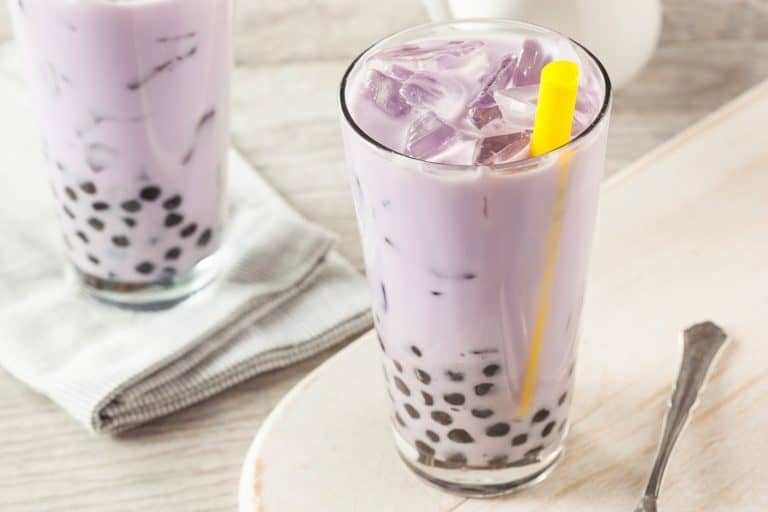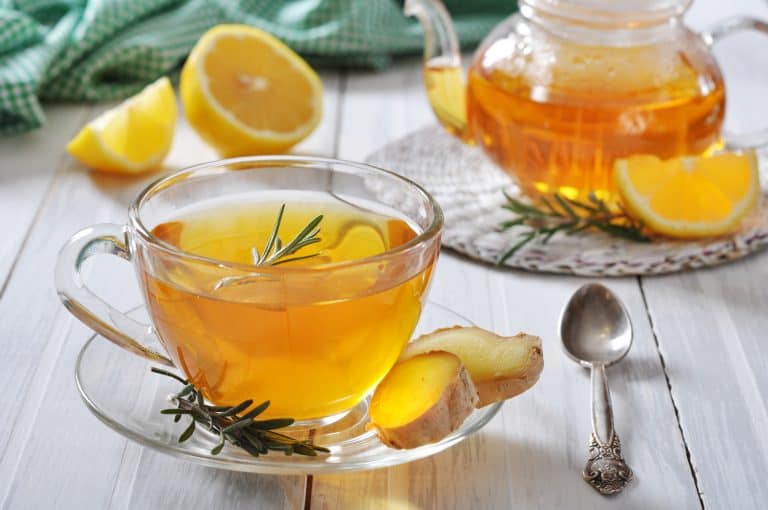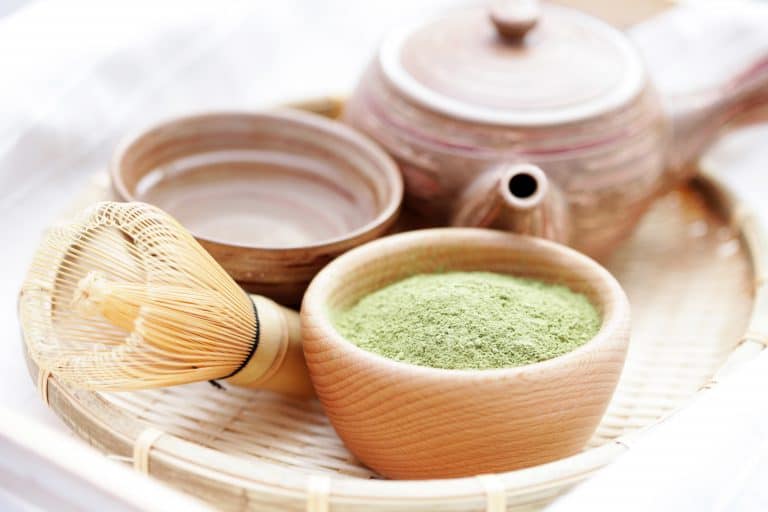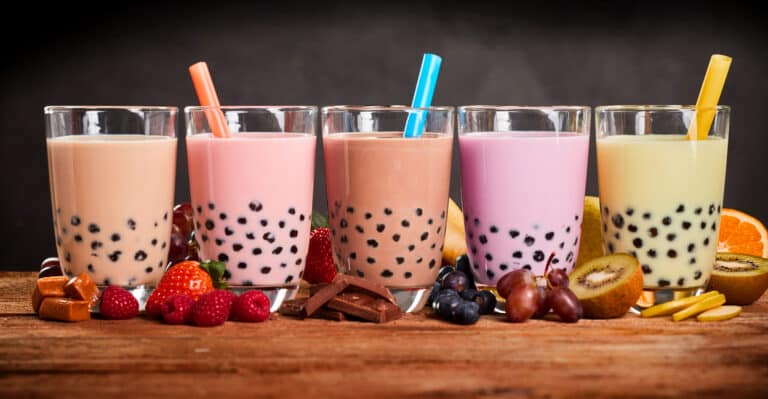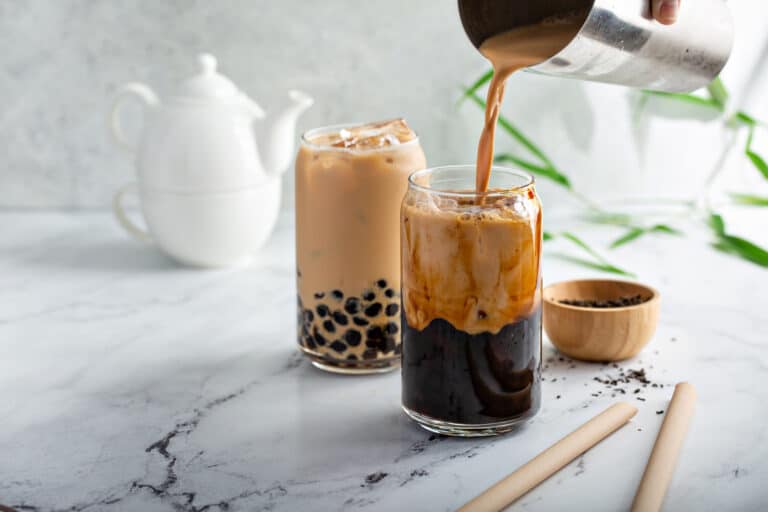Best Time to Drink Oolong Tea: Unlocking Its Optimal Benefits
Disclosure: This post may contain affiliate links, meaning I get a commission if you decide to make a purchase through my links, at no cost to you.
Many tea enthusiasts are curious about the best time to drink oolong tea to reap its maximum potential. Determining the best time to drink this delicious beverage can vary depending on your personal preferences and individual needs.
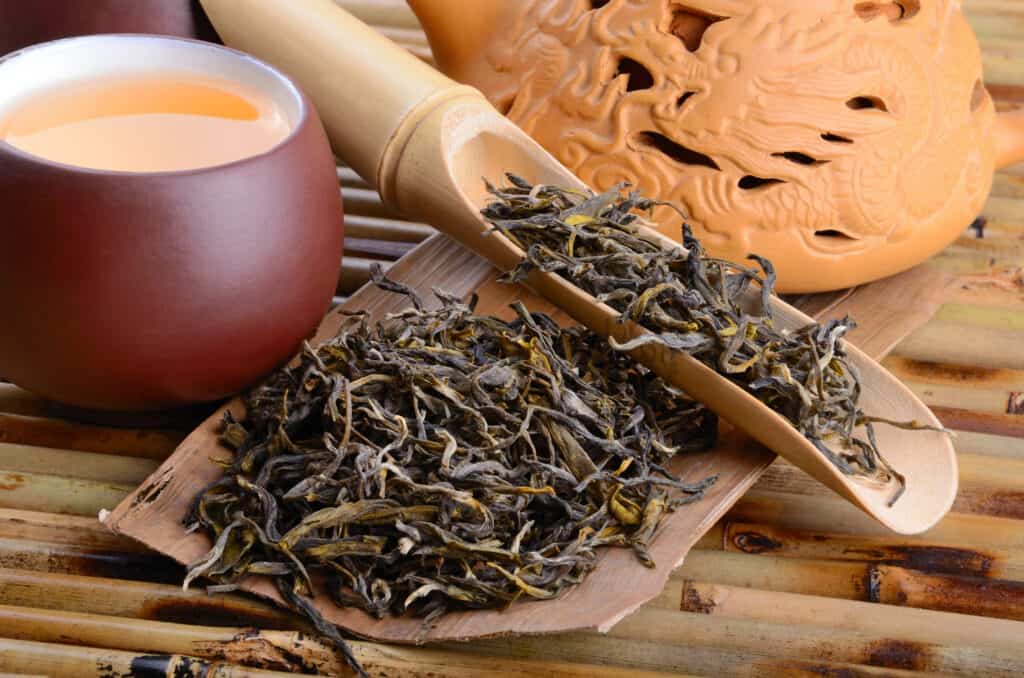
If you want to boost your metabolism and promote weight loss, it’s advisable to enjoy oolong tea in the morning or before a meal. Drinking oolong tea about 30 minutes before a workout can also enhance your weight loss efforts. However, since oolong tea contains caffeine, you may want to avoid consuming it too late in the day. Ultimately, finding the right balance for your schedule is essential to experiencing the optimal benefits that oolong tea can offer.
Understanding Oolong Tea
Traditional Chinese Tea
Oolong tea is a traditional Chinese tea known for its unique flavor and health benefits. Originating from the Fujian province of China, it has gained popularity worldwide. As a traditional Chinese tea, it holds cultural significance and is often enjoyed during special occasions and gatherings.
Type of Tea
Oolong tea is a type of tea that falls somewhere between green and black tea in terms of oxidation and flavor. It is made from the leaves of the Camellia sinensis plant, which gives the tea its unique characteristics. The versatile nature of this plant allows for a wide variety of flavors, ranging from light and floral to bold and robust.
Oxidation Process
The oxidation process plays a key role in determining the flavor and color of oolong tea. During this process, the tea leaves are exposed to air, which helps to develop the distinct flavor and aroma. Oolong teas undergo partial oxidation, usually ranging from 10% to 85%. This varying level of oxidation gives oolong teas a broader spectrum of flavors compared to green and black teas, which have specific oxidation levels.
Some common oxidation levels and their corresponding oolong tea flavors are:
- Lightly Oxidized (10-20%): Light, floral, and slightly sweet
- Moderately Oxidized (20-50%): Floral with mild fruitiness and increased complexity
- Heavily Oxidized (50-80%): Deeper and smoother flavor with fruit, chocolate, or roasted notes
Production Process
The production process of oolong tea involves several stages, including:
- Withering: The tea leaves are spread out in a cool area to wither and lose some of their moisture.
- Bruising: The leaves are gently shaken or rolled, causing the edges to break and exposing them to oxygen, initiating the oxidation process.
- Oxidation: As mentioned earlier, oolong tea leaves undergo partial oxidation to develop their unique flavor and color.
- Fixation: The leaves are briefly heated to stop the oxidation process and to preserve the desired level of oxidation.
- Rolling: This step helps to shape the tea leaves and enhance the flavor by releasing essential oils.
- Drying: The tea leaves are dried to make them ready for storage and eventual consumption.
By understanding the unique qualities of oolong tea, from its traditional Chinese roots to the production process, you can fully appreciate and enjoy the vast world of oolong tea flavors and benefits. So, go ahead and explore the different varieties of oolong tea to find your new favorite!
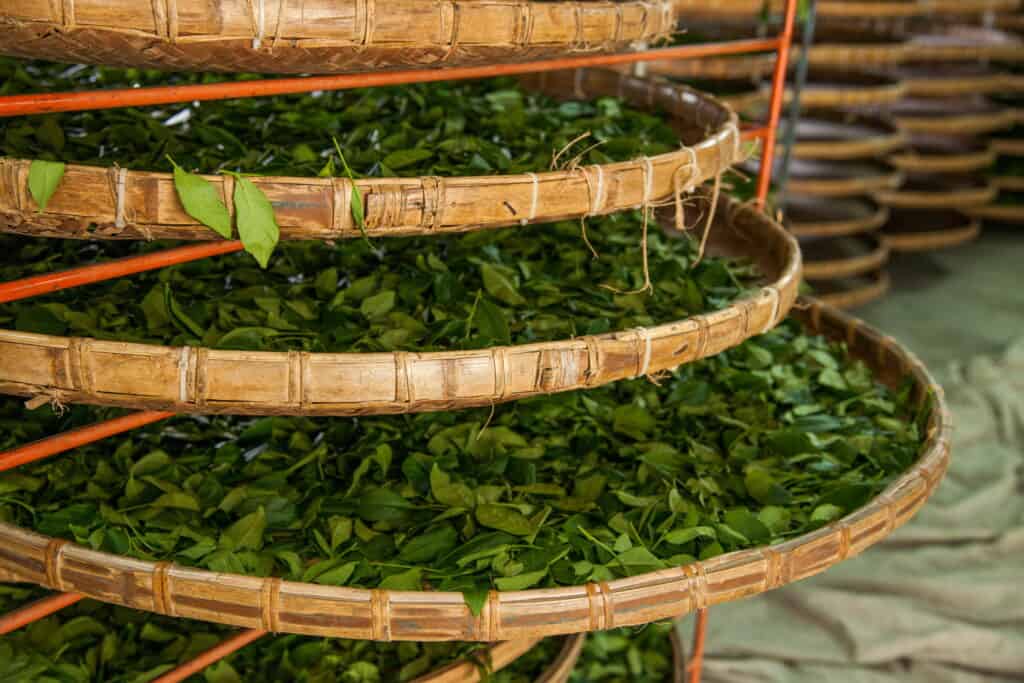
Best Time to Drink Oolong Tea
Sleep Cycle Considerations
When considering the best time to drink oolong tea, it’s essential to factor in its caffeine content. Oolong tea contains about 30-50 mg of caffeine per cup, which can affect your sleep patterns if consumed too late in the day. To ensure a good night’s sleep, it’s best to enjoy oolong tea in the morning or early afternoon. Drinking oolong tea at this time can also give your energy levels a boost, helping you feel more alert and focused throughout the day.
Weight Loss and Energy Expenditure
If weight loss is your goal, consuming oolong tea before a meal or a workout can be beneficial. It has been suggested that oolong tea may boost metabolism and promote weight loss. Drinking oolong tea 30 minutes before a workout may increase energy expenditure and contribute to burning more calories. Taking your body weight into account can also help determine the optimal amount of caffeine intake for weight loss and energy expenditure.
Balancing Health Benefits and Caffeine Intake
While oolong tea offers a range of health benefits, it’s crucial to balance these benefits with your caffeine intake. Try to consume oolong tea 25-35 minutes after a meal if you wish to optimize digestion and mineral absorption. Aim to drink oolong tea within six months of purchase for the best results, and be mindful not to consume it in excessive amounts or for a prolonged period. Adjust the amount of caffeine you consume based on your desired health benefits and your sensitivity to caffeine.
Health Benefits of Oolong Tea
Boosting Immune System
Drinking Oolong tea regularly can help improve your immune system. The antioxidants present in the tea can help your body fight off harmful free radicals, contributing to overall health and wellness. This can potentially reduce your risk of developing illnesses and infections.
Weight Management and Metabolic Rate
Oolong tea is known to aid in weight management and boosting your metabolic rate. The compounds in the tea can increase energy expenditure and stimulate fat oxidation, which can help in losing weight and preventing obesity. Make a habit of drinking Oolong tea, especially 30 minutes before a workout, to potentially enhance your weight loss efforts.
Reducing Risk of Heart Disease and High Blood Pressure
Consuming Oolong tea has been linked to a reduced risk of developing heart disease and high blood pressure. Regularly drinking at least 10 ounces of oolong tea per week may help lower total cholesterol, triglyceride, and “bad” LDL cholesterol levels, which are all factors contributing to heart disease. This can help protect your heart and maintain a healthy cardiovascular system.
Promoting Healthy Brain Function
Oolong tea contains caffeine and antioxidants that can help improve brain function. Consuming the tea can aid in enhancing focus, memory, and cognitive performance. Incorporate Oolong tea into your daily routine to promote a healthy brain and potentially prevent age-related cognitive decline.
Read more about the health benefits of oolong tea here
Caffeine Content and Oolong Tea Consumption
Cup of Oolong Tea versus Cup of Green Tea and Coffee
When it comes to caffeine content, a cup of oolong tea has approximately 38 mg of caffeine, while a cup of green tea contains around 29 mg (1). For comparison, an 8-ounce cup of coffee has about 70 to 130 mg of caffeine (2). Keep this in mind when you plan your tea consumption, especially if you are sensitive to caffeine.
How Much Oolong Tea to Consume Daily
Drinking oolong tea in moderation is key to enjoying its benefits without experiencing adverse effects due to excessive caffeine intake. It is generally safe to consume about 4 cups of oolong tea daily (3). Be mindful of your overall caffeine consumption, including other sources such as coffee, energy drinks, or soda.
Caffeine Sensitivity and Allergic Reactions
Pay attention to your body’s response when you consume oolong tea. Some individuals may be more sensitive to caffeine or have allergic reactions to specific compounds found in tea. If you experience symptoms such as rapid heartbeat, jitteriness, or difficulty sleeping, consider reducing your tea consumption or switching to a lower caffeine alternative.
Pregnant women should also be cautious with caffeine intake, as excessive amounts can have negative effects on the pregnancy. Consult your healthcare provider for specific recommendations on tea consumption during pregnancy.
By being mindful of the caffeine content in oolong tea, as well as your personal tolerance and any potential allergies, you can safely enjoy the benefits of this flavorful and healthful beverage.
See the best time to drink detox tea
Variety and Flavor of Oolong Teas
Different Types of Oolong Tea
Oolong tea occupies a unique space in the tea world, positioned between green and black tea. The oxidation level of oolong tea ranges from around 8-85%, resulting in varied flavors and aromas. Some common types of oolong tea you might encounter include Iron Goddess of Mercy (Tie Guan Yin) and Dark Dragon (Wuyi Rock). Each type possesses unique characteristics derived from the tea plant variety, processing technique, and regional terroir.
Tea Masters’ Techniques
The art of making oolong tea relies heavily on the skill of tea masters. Through intricate, labor-intensive processes, these artisans are able to coax a wide range of flavors from a single batch of leaves. Their techniques may include precise withering, shaking, bruising, and baking of the leaves to develop different flavors and aromas. The level of oxidization in the leaves affects the final outcome of the tea, and a tea master’s expertise can be seen in how they control this variable.
Factors Influencing Sweet Flavor and Aroma
The overall character of oolong tea derives from a mix of several factors:
- Tea Plant Variety: Slight differences in tea plant genetics can significantly impact the flavor profile of oolong tea. Certain plant varieties are known for their inherently sweet or floral characteristics.
- Terroir: The geographical location, soil type, climate, and elevation of the region where the tea is grown can significantly influence the flavor of the tea.
- Oxidation Level: The degree of oxidation that the tea leaves undergo greatly affects the final taste and aroma of oolong tea. Lower oxidation levels generally yield lighter, more floral notes, while higher oxidation levels produce darker, richer flavors.
- Roasting Process: Tea masters may roast oolong tea leaves to varying degrees, resulting in a spectrum of flavors ranging from light, fruity, and floral to dark, robust, and toasty.
By understanding these factors, you can better appreciate the wide range of flavors found in oolong tea and choose a type that suits your personal preferences.
Nutritional Components and Their Effects
Amino Acids and Antioxidant Activity
Oolong tea contains an amino acid called L-theanine which is known to promote relaxation and reduce stress. This amino acid works synergistically with the caffeine in tea, providing cognitive support without the jittery side effects of other caffeinated beverages. Additionally, oolong tea boasts antioxidant activity, as it contains a variety of tea polyphenols that help protect your body against free radicals and oxidative stress.
Tea Polyphenols and Free Radicals
Tea polyphenols are a group of natural compounds found in oolong tea, as well as in black and green teas. These polyphenols play a crucial role in the tea’s antioxidant activity, helping to neutralize free radicals and reduce the risk of various chronic diseases. With regular consumption of oolong tea, your body can benefit from the protective effects of tea polyphenols against free radical damage, which is linked to aging, inflammation, and several other health concerns.
Minerals and Energy Metabolism
Oolong tea also contains a range of essential minerals that support various bodily functions, including energy metabolism. Some of these minerals include calcium, potassium, and magnesium. However, it’s important to note that the tannins present in oolong tea can bind with minerals such as iron, zinc, and calcium, which may affect their absorption in your body. To avoid potential interference with the absorption of these nutrients, it’s recommended to drink oolong tea about 30 minutes after a meal. This timeframe allows your body to absorb the vital nutrients from the food you’ve eaten before the tea consumption.
Other Considerations for Drinking Oolong Tea
Effect on Tooth Decay and Oral Health
Drinking oolong tea can have a positive impact on your oral health. The antioxidants present in the tea may help inhibit the growth of harmful bacteria in your mouth, thus reducing the risk of tooth decay. Additionally, the tea can help in neutralizing the acids produced by bacteria, which can further protect your teeth from erosion. However, it’s essential to maintain a proper oral hygiene routine and not solely rely on oolong tea for preventing tooth decay.
Possible Side Effects of Excessive Tea Consumption
While oolong tea offers several health benefits, excessive consumption can have some side effects. Keep an eye on your daily intake to avoid issues like:
- Caffeine sensitivity: Oolong tea contains caffeine, which may cause restlessness, insomnia, or increased heart rate in those who are sensitive to its effects. Limiting your intake to 2-3 cups per day may help prevent these issues.
- Impact on cholesterol levels: Drinking oolong tea can help reduce your LDL (bad) cholesterol levels, but excessive consumption can have the opposite effect. Moderation is key to ensure a healthy balance.
- Effect on blood sugar levels: Although oolong tea can help regulate blood sugar levels in people with type 2 diabetes, excessive consumption may lead to fluctuations. Monitor your blood sugar levels and consult your doctor if you notice any significant changes.
- Influence on body fat and fat metabolism: Oolong tea is known to aid in fat breakdown and fat oxidation when consumed in moderation. However, relying solely on tea for weight loss is not recommended—maintaining a balanced diet and regular exercise routine is equally important.
- Skin health: The antioxidants in oolong tea can promote healthy skin by reducing oxidative stress. However, excessive caffeine intake might lead to dehydration, which can negatively impact your skin health. Ensure you’re drinking enough water alongside your tea intake.
Remember, moderation is key when it comes to enjoying the benefits of oolong tea without experiencing any adverse effects. Listen to your body and adjust your consumption as needed.
Happy Brewing!
Amanda
